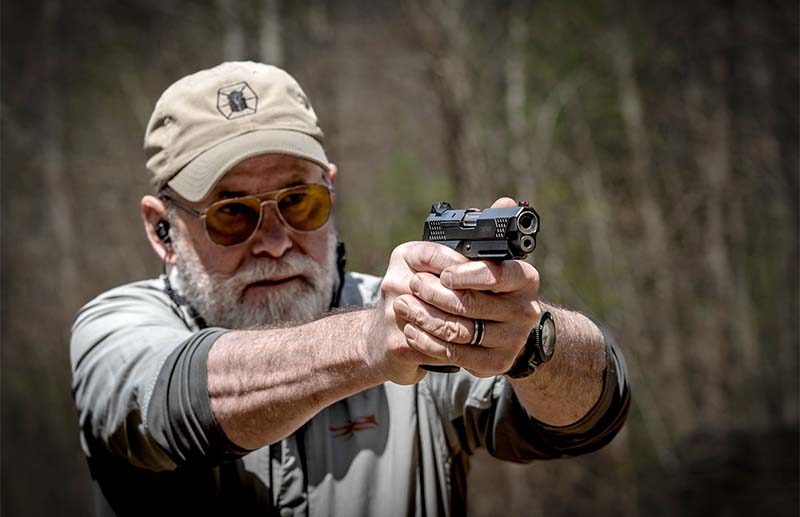An evaluation of common shooting stances that can help you shoot a handgun easier and more consistently.
I began working in law enforcement in the early ’90s. At that time, competition pistol shooting and tricked-out pistols were the rage, and the things that worked in competition were the marketplace and training. Though you don’t hear so much about it now, at that time there was a running debate about which shooting stance—isosceles or Weaver—was the best.
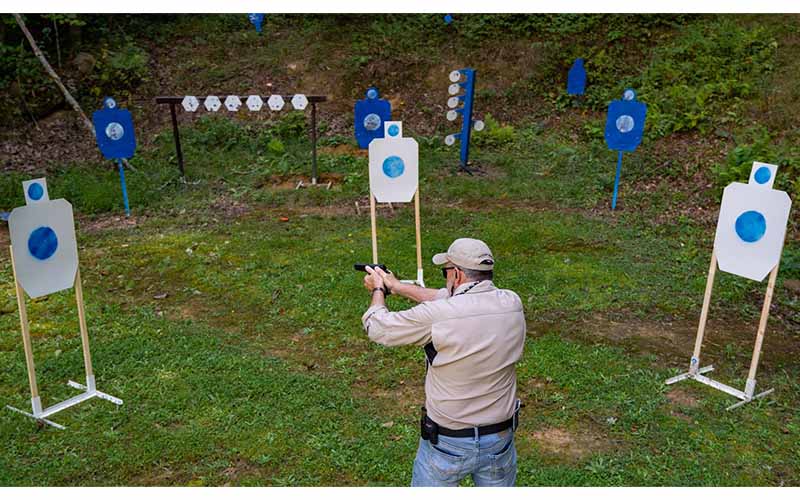
The Weaver stance was developed by Jack Weaver of Lancaster, California, in 1959 for the purpose of ensuring quick and accurate shot placement with a handgun. It was later codified by Jeff Cooper and very much resembles a fighting stance that might be used by a boxer or mixed martial arts fighter. This shooting stance allows you to deliver force quickly, while maintaining balance and the ability to move.
The isosceles began to get a lot of attention when Rob Leatham used his version of it to win several major competitions. According to Max Michel, who has won more world speed shooting championships than anyone, “The isosceles stance allows the competitive shooter to square up to the target, which gives stability and a full range of motion in a 180-degree arc, allowing them to easily transition to multiple targets.”
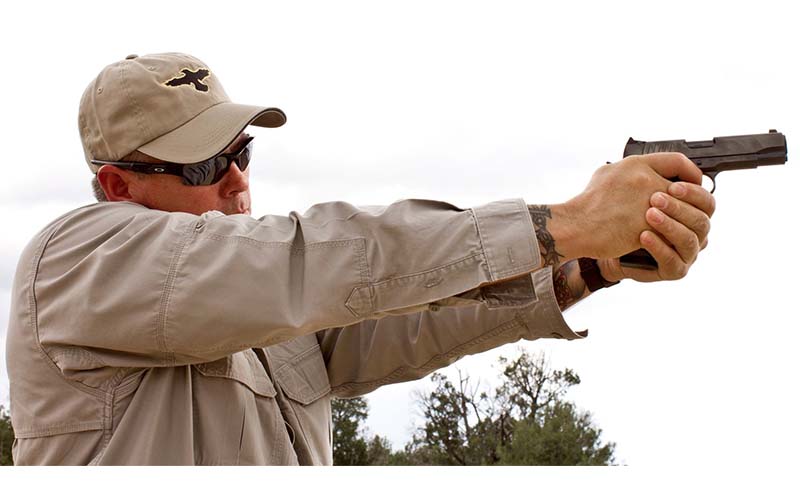
Most do not understand either of these shooting stances, or they complicate both with the insistence that any deviation from their rigid understanding nullifies both techniques. I’ve been trained in both by what would be considered masters. I learned the Weaver stance at Gunsite Academy, and I learned the isosceles—or at least his version of it—from Michel. Both work very well, and if you’re just learning to shoot a handgun, both will provide you with an equally solid foundation to learn from.
The Weaver
Though some believe the Weaver stance is a bladed stance, it’s not. You stand with your body squared to the target. Feet should be about shoulder width apart, and some suggest your strong side foot be slightly behind your weak-side foot by about a half step. Your knees should be over your toes, and your shoulders should be over your knees. Essentially, you have a very slight forward lean. Your head is held erect and when you draw your handgun, you bring it up to eye level. You do not drop your head.
The main distinction of the Weaver stance is that your weak or support arm elbow is bent at about a 45-degree angle, and your shooting arm’s is either straight or the elbow is very slightly bent. What’s critical about the Weaver stance is that you push the pistol forward with your shooting arm and apply pressure to the rear with your support arm.
The Isosceles
Just as with the Weaver stance, your body should be squared to the target. Your feet can either be side by side, shoulder width apart or one can be slightly forward. Also, just as with the Weaver, your knees should be over your toes and your shoulders should be over your knees, and your head is held erect; when you draw your handgun, you bring it up to eye level.
The main distinction of the isosceles stance is that both of your arms are extended, with the elbows locked or only very slightly bent. And, just like the Weaver stance, you push the pistol forward with your shooting arm and apply pressure to the rear with your support arm.
For the key takeaways and what’s most important, let’s look at the similarities between the two as opposed to the differences.
- Feet about shoulder width apart
- Knees over toes, shoulders over knees
- Head erect
- Bring handgun to eye level
- Push forward with the shooting hand, pull with the support hand
The Good
The good thing about learning a shooting stance is that if you do either the Weaver or the isosceles correctly, it will make learning to shoot a handgun easier. This is why a stance of some sort is generally the second thing you learn … after grip. If you develop a good shooting foundation, you can then direct more of your attention to the other aspects of shooting—like grip, sight alignment and trigger control—because you’re not trying to do/learn everything at the same time while trying to maintain balance. And balance is what really matters when it comes to a shooting stance.
The Bad
Regardless of the stance you’re shooting from, one of the most frequent mistakes is not keeping your head erect. You can better monitor and react to your situation with your head erect. If you don’t believe me, just watch a professional NFL quarterback. When they drop back in the pocket to pass, where they’re under duress and must maintain awareness of pass rushers/attackers, they keep their head erect. As a pistol shooter, you should do the same; keep your head erect and bring the pistol’s sights up to your eyes.
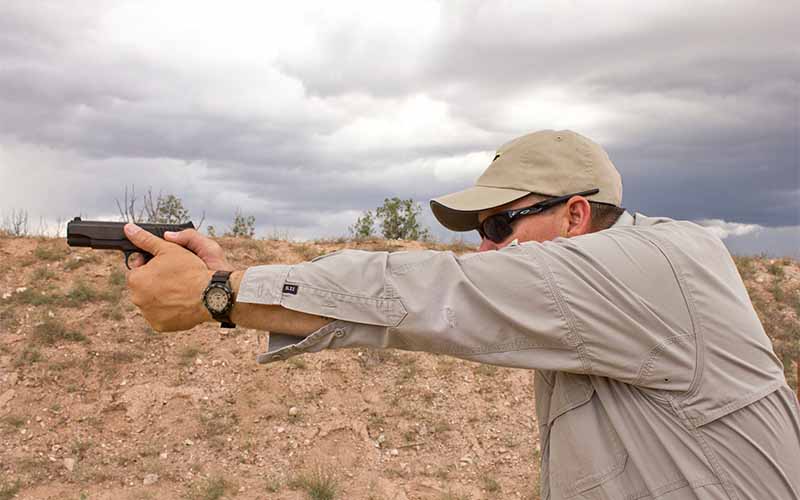
The Ugly
Often, you’ll see those shooting the Weaver stance cock their head to the side and rest it on their shooting arm. Similarly, you’ll see those shooting the isosceles stance duck their head like a turtle between their shooting arms. Neither approach is correct. Just the same, shooters will excessively blade their body with the Weaver stance, and they’ll spread their legs too far apart or lean too far forward with the isosceles stance. When learning to shoot, these bad stance examples might not seem like a serious problem. It’s when you advance to more complicated shooting problems or are learning to deal with tactical situations that these ugly habits can cause problems with your performance.
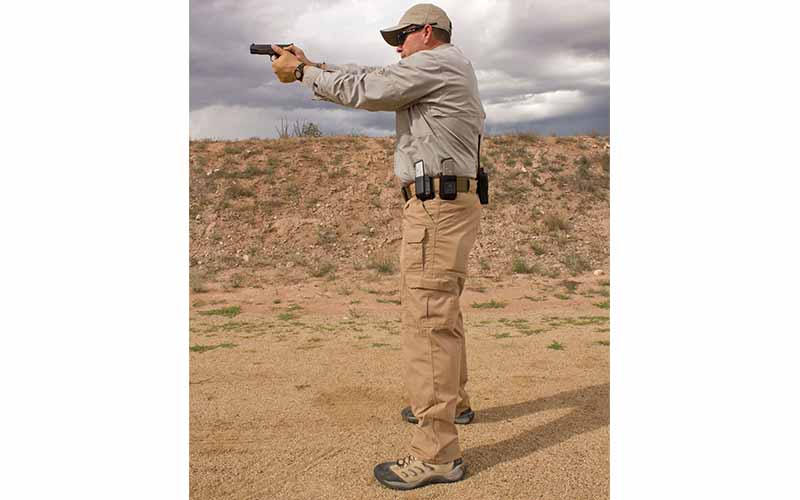
The Balanced Stance
I strongly suggest that new shooters pick either the Weaver or the isosceles stance and use it correctly as you develop your shooting proficiency. Learn either—it does not matter which one—well enough so that it’s a reflexive response to the decision to shoot. This leaves more of your brain available to help you shoot better.
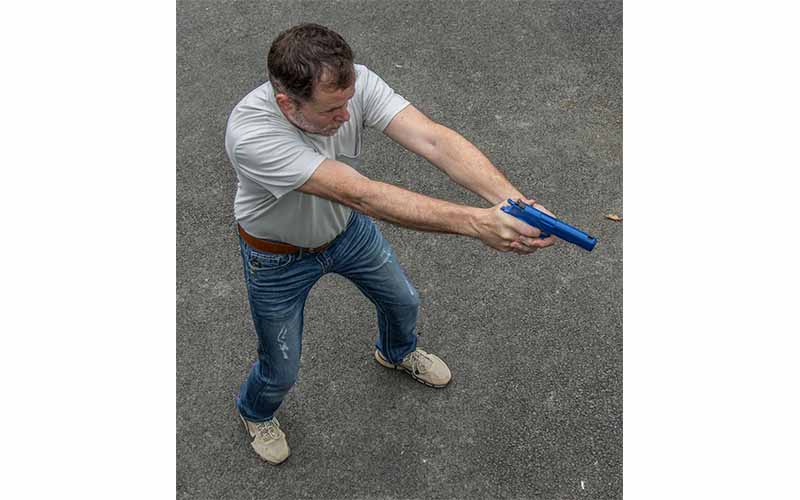
However, you’ll eventually find that you will use some combination of both shooting stances to address more complex shooting problems, such as you might have to do during competition or tactical training, or heaven forbid, a situation where you must shoot to save your life. Once you become proficient at shooting a handgun, the only thing that really matters about your stance is that it’s balanced enough to control the handgun … and balanced enough to keep you on your feet during a fight.
Editor’s Note: This article originally appeared in the August 2023 issue of Gun Digest the Magazine.
More On Defensive Handgunnery:
 NEXT STEP: Download Your Free Storm Tactical Printable Target Pack
NEXT STEP: Download Your Free Storm Tactical Printable Target Pack
62 Printable MOA Targets with DOT Drills – Rifle Range in YARDS This impressive target pack from our friends at Storm Tactical contains 62 printable targets for rifle and handgun range use. Target grids and bullseye sizes are in MOA. Ideal for long-range shooting!
Subscribe to the Gun Digest email newsletter and we’ll send your print-at-home target pack right away. Just enter your email address below.
